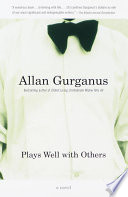Product desciption
Plays Well With Others Allan Gurganus by Allan Gurganus 9780307764133, 9780375726637, 9780375702037, 9780375727634, 0307764133, 0375726632, 0375702032, 0375727639 instant download after payment.
In his widely read, prizewinning Oldest Living Confederate Widow Tells All, Allan Gurganus gave fresh meaning to an overexplored American moment: 1860-65. He now turns that comic intensity and historical vision to another war zone: entry-level artistic Manhattan 1980-95. In his first novel since Widow, Gurganus offers us an indelible, addictive praise-song to New York's wild recent days, their invigorating peaks and lethal crashes. It's 1980, and Hartley Mims jr., a somewhat overbred Southerner, arrives in town to found his artistic career and find a Circle of brilliant friends. He soon discovers both Robert Christian Gustafson, archangelic boy composer of Symphony no. 1: The Titanic, and Alabama Byrnes, a failed Savannah debutante whose gigantic paintings reveal an outsized talent that she, five feet tall, can't always live up to. This circle--sexually venturesome, frequently hungry, hooked on courage, caffeine, and the promise of immortality--makes history and most everybody else. Their dramatic moment in New York history might've been a collaboration begun, as a toast, by Cole Porter and finished, as pure elegy, by Poe himself. Plays Well with Others is a fairy tale. It has a Legend's indoctrinating charm and hidden terrors. It chronicles a ragtag group of gifted kids who come to seek their fortunes; they find the low-paying joys of making art and the heady education only multiple erotic partners can provide. Having mythologized each other through the boom years, having commenced becoming "names," they suddenly encounter a brand-new disease like something out of fifth-rate sci-fi. Friends are soon questioning how much they really owe each other; they're left with the ancient consolation of one another's company and help. We watch this egotistic circle forge its single greatest masterwork: a healthy community. The novel, a sort of disco requiem-mass, divides itself into three symphonic movements: "Before," "After," and "After After." The work concludes in a homema


